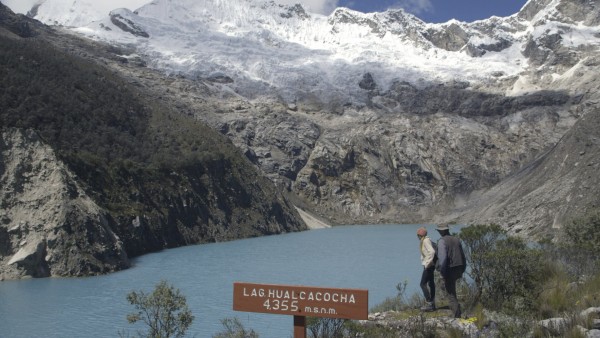Synopsis
Acting as the water reserve for all of its surrounding regions, the Andean glaciers are the second pillar of Peru’s ecological equilibrium. Reaching heights of more than 6,000 meters in altitude, these glaciers form an impenetrable barrier to the Amazonian clouds, whose precipitation consequently falls on these summits in the form of rain or snow. Situated in the tropics, these ice giants are the most active tropical glaciers in the world, with snow accumulation and considerable melting happening throughout the year. In the heart of Huascaran Park, a sanctuary for the plant and animal life at this altitude, Cyril and Anne are accompanied by Jesus Gomez to discover the variety of astonishing ecological systems that exist here. During their ascent, they are surprised to come across large forests of queñuales, the only trees capable of growing at such high altitudes. These crooked trees and reservoirs of moisture contain an abundant vegetation and house many diverse birds. Further away on a detoured path, Cyril has the opportunity to take spectacular photos of viscachas. While observing these furry little creatures, who are particularly adapted to the cold, Anne notices that they only go out in the open to sunbathe, as well as to search for lichens, moss, and herbs, which are essential to their life underground. Moving on, the two adventurers also explore a series of magnificent, clear-watered lagoons with crystalline colors before descending into the valley. There, Cyril tries to unravel the mystery of the puyas – huge, astonishing plants that bloom only once in their lifetime and whose inflorescence can shoot several meters high! At 5,000 meters above sea level, Cyril and Anne finally reach the slopes of the Artesonjaju glacier where they join glaciologist Thomas Condom and his scientific team. Here, they conduct readings of the rainfall and sunshine at one of the highest weather stations in the world. The glaciologist, who has been following the evolution of the Andean glaciers for several years, explains the growing threats to the ice, which have shrunk in the last twenty years due to shifting seasons and decline in rainfall. In the heart of the Pastoruri glacier, Cyril searches for crevices to obtain exquisite shots of immense underground spaces which will inevitably disappear. Isolated in the heart of the Cordilleras, Lake Titicaca is the next stop for our two explorers. It is considered to be the highest navigable lake in the world. Accompanied by Peruvian biologist Arturo Munoz, Cyril uses his underwater equipment to track down the Titicaca water frog, a very large amphibian with bizarre looks, that is being threatened by overfishing and pollution. To finish their journey, Cyril and Anne finally track down a little-known species that has a truly ecological role: the rare Andean spectacled bear. It is the most endangered species of bear in the world with fewer than 2,000 of them remaining in the wild due to deforestation. And yet, this bear plays an important and vital role in the regeneration of these forests as they are responsible for dispersing the seeds which are found in its food.



